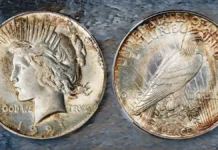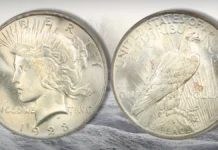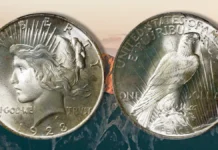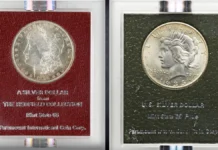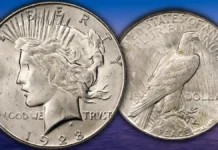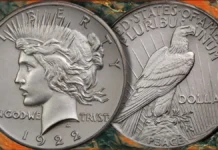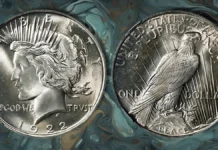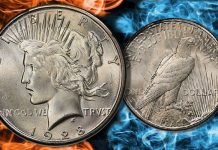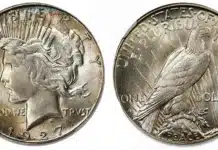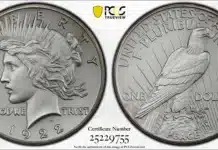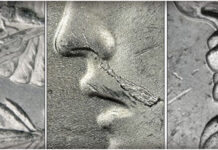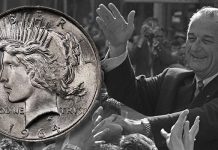TAG RESULTS FOR:
Peace Dollars
Related Articles on CoinWeek
1921 Peace Dollar : A Collector’s Guide
By Charles Morgan and Hubert Walker for CoinWeek Notes .....
The 1921 Peace dollar is the debut issue of sculptor Anthony de Francisci's design. It...
Peace Dollar, 1922-1935 : A Collector’s Guide
By Charles Morgan and Hubert Walker for CoinWeek Notes .....
A New Dollar for a New Era of Peace
Morgan dollars were minted from 1878 through...
1923 Peace Dollar : A Collector’s Guide
The 1923 Peace dollar is one of the most common issues in the series, with 30,800,000 pieces struck. It claims the second-highest mintage of...
Paramount Holder – First Graded Slab for Silver Dollars
(n.)
A Paramount holder is a small plastic holder that encased silver dollars from the Redfield Hoard.
The holders came in three configurations: red, blue, and...
1928-S Peace Dollar : A Collector’s Guide
The 1928-S Peace dollar is among the most common later-date Peace dollars and one of the series’ major condition rarities. The last date struck...
1922 Peace Dollar, High Relief, Matte Proof : A Collector’s Guide
The 1921 High Relief Peace dollar was produced from December 28 to December 31, 1921. United States Mint Chief Engraver George T. Morgan anticipated...
1922 Peace Dollar : A Collector’s Guide
1922 Low Relief Peace Dollar
The year 1922 marked the first full-calendar production year for artist Anthony de Francisci's Peace dollar design. Premature die breakage...
1925-S Peace Dollar : A Collector’s Guide
With 1,610,000 struck, and only about two dozen bags equivalent of uncirculated examples saved, the 1925-S Peace dollar is the key to the Peace...
The Binion Hoard : A Morgan Dollar Murder Mystery
By Rick Bretz for CoinWeek .....
The Binion Hoard offers the collector a variety of ways to collect coins, currency, and memorabilia like ashtrays, dice,...
Peace Dollars: Art vs. Commerce
By Victor Bozarth for PCGS ......
I’ve always liked Peace Dollars, which I call the underdog of silver dollars. And I’ve always rooted for the...
Mint State 65+ 1927-S Peace Dollar in Stack’s Bowers Auction
By Chris Bulfinch - Numismatist, Stack's Bowers ......
Peace dollars of any date are rare in the highest Mint State grades (MS-67 and higher) -...
ACEF Reports Fakers Using Same Cert Numbers Multiple Times
Recent examples of fake “certified” Morgan and Peace dollars have been found with the same certification numbers on the encapsulation inserts, cautions the Anti-Counterfeiting...
The 1921 High-Relief Peace Dollar
By Jack Vaughn for PCGS ......
The 1921 High-Relief Peace Dollar is a key date in its series and is regarded as an essential coin...
Jeff Garrett: Collecting Silver Dollar Varieties
By Jeff Garrett for NGC (Numismatic Guaranty Corporation) ......
Collecting United States coins by die variety has its origins in early copper coinage. Some of...
The 1964 Peace Dollar That Never Was
By Blanchard & Company ......
In 1965 the United States Mint melted 316,076 silver Peace dollar coins that never reached circulation. These coins were the...


